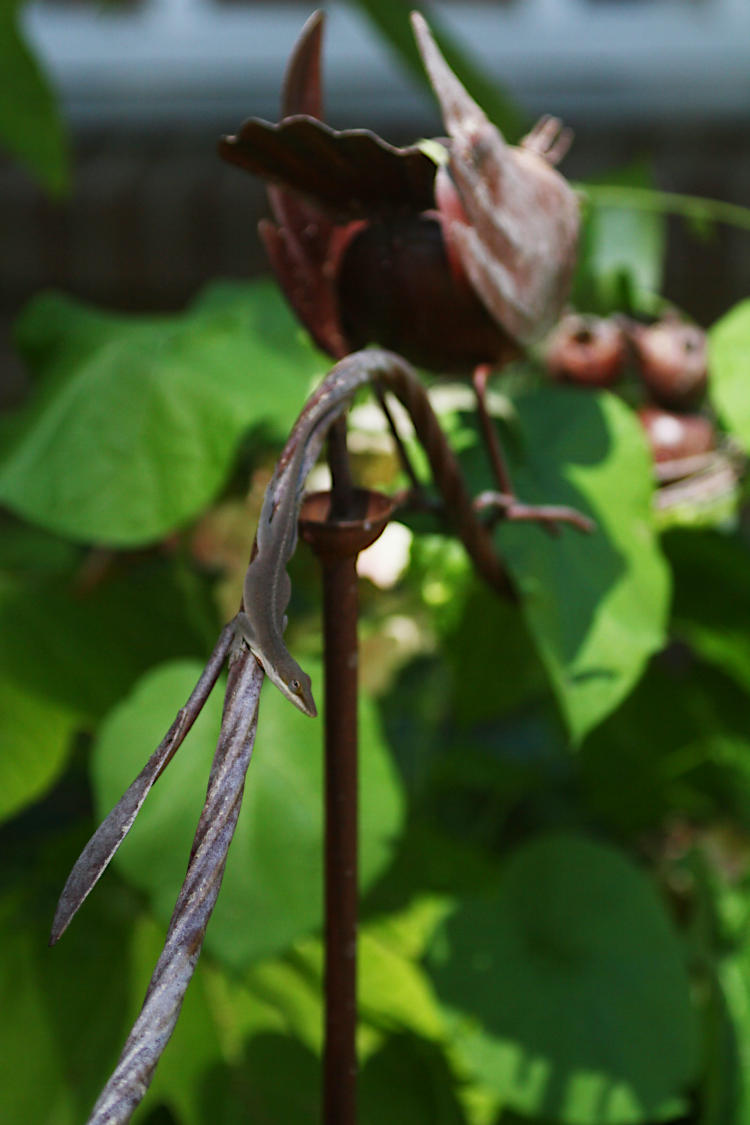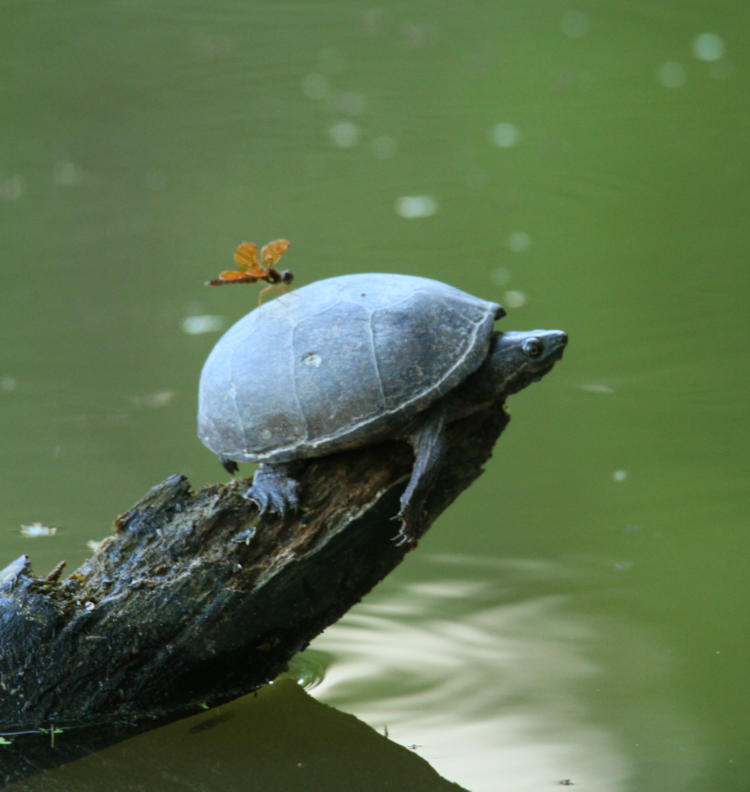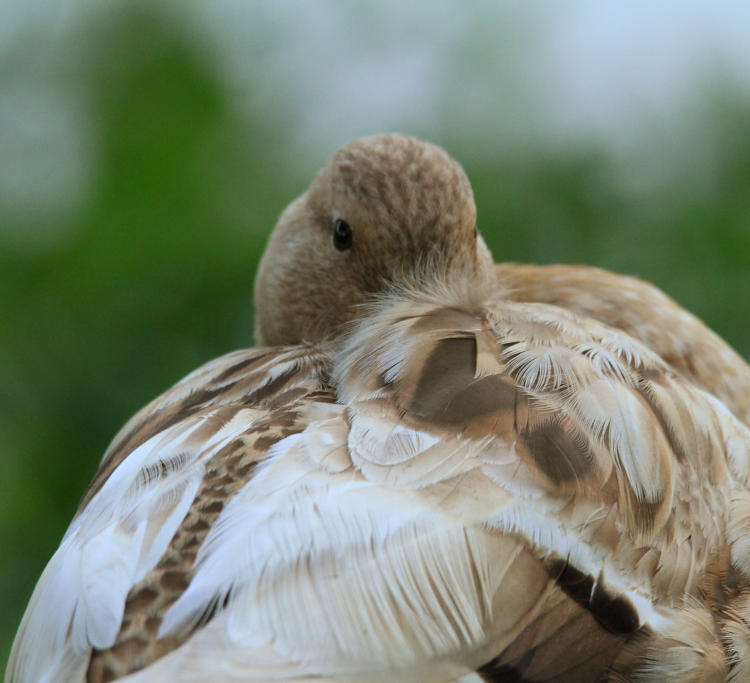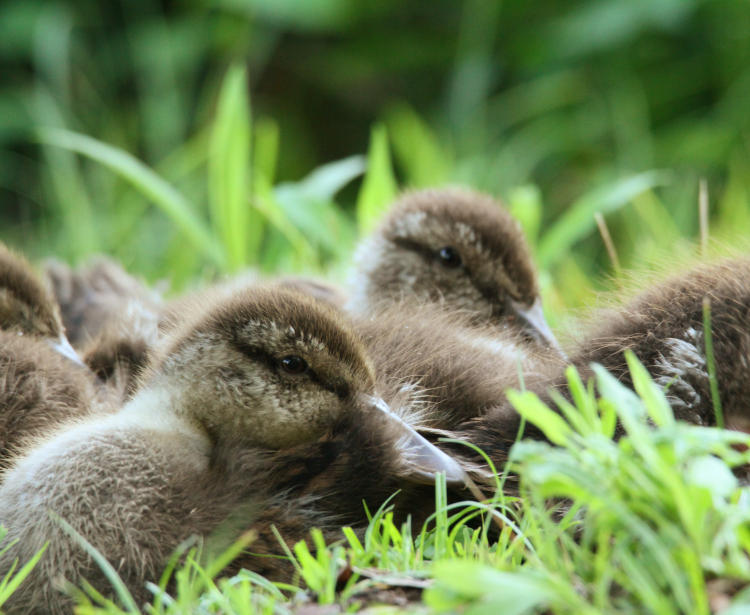
Just a handful more pics, some from yesterday, and I hope I don’t have to tell you where that quote comes from – granted, it’s not verbatim. But this Carolina anole (Anolis carolinensis) was doing its best to remain inconspicuous while getting some sun in the morning. This is being more accommodating than earlier, when it was perched on the vertical support bar and doing a great job of remaining on the opposite side no matter where I positioned myself…
While at the pond getting the image from the previous post, I got a couple other keepers, this one among them:

This is the kind of image that takes a long time, solely from my habit of providing proper species names for the posts; looking these up can take a while. The dragonfly is likely an eastern amberwing (Perithemis tenera,) while the turtle may well be a striped mud turtle (Kinosternon baurii,) though it’s possible that it’s an eastern mud turtle (Kinosternon subrubrum) – that’s probably more likely, despite the stripe on the snout, because far be it from me to ever feature a species that doesn’t have “eastern” in its goddamn name. I swear, taxonomists (that’s an occupation, right?) are more enamored of the east/west distinction than southerners are of the north/south one. And that’s saying something.
[If you clicked on that last link and saw the list of “eastern” species, just know that in the two years since, I’ve added six more to the list – again, only that I’ve featured here on the blog.]
And a couple from a few days back.

The resident buff-colored female mallard (I just call her, “Buffy,” because I’m clever like that) was snoozing on the banks among a gaggle of Canada geese and allowed me to pass pretty close, but kept an eye on me just in case. And so did her offspring.

I believe, from conversing with those that live around the pond (the humans, anyway,) that she started out with nine ducklings, but those numbers have whittled down to five, as of last night – this is fairly typical attrition for ducklings, and it’s often worse, but it’s why ducks have clutches of so many eggs. The ducklings are big enough now that being snagged by snapping turtles or bass is far less likely, but there are still land-based predators, as a large scattering of feathers near one roosting area attested to; fox or coyote, most likely. One of these days I need to stake-out a likely area with a blind and powerful flashes and see what I can get, though I know this is going to be a serious challenge.
Coming soon: a few non-local species from a guest photographer. Keep refreshing that page!



















































